中级财务会计 双语
- 格式:ppt
- 大小:900.00 KB
- 文档页数:65



Intermediate Financial AccountingIntroductionFinancial accounting is a fundamental component of a company’s management and reporting process. It involves the recording, analysis, and reporting of a company’s financial transactions. A strong foundation in financial accounting is essential for any individual looking to pursue a career in finance or accounting. This document aims to provide an overview of intermediate financial accounting concepts and principles.The Accounting CycleThe accounting cycle is a series of steps that are followed in the financial accounting process to ensure accurate and reliable financial reporting. The cycle begins with the recording of transactions and ends with the preparation of financial statements. The key steps in the accounting cycle include:1.Identifying and Analyzing Transactions: This step involvesidentifying relevant financial transactions and analyzing their impact on the company’s financial position.2.Recording Journal Entries: Journal entries are recorded todocument the financial transactions. These entries are made in the generaljournal, which is a chronological record of all transactions.3.Posting to General Ledger: The information from the journal entriesis transferred to the general ledger accounts, which are used to summarizetransactions for each account.4.Preparing Trial Balance: A trial balance is prepared to ensure thatall debit and credit balances in the general ledger are equal. If there are noerrors, the total debits will equal the total credits.5.Adjusting Entries: Adjusting entries are made at the end of theaccounting period to record any transactions that have not been previouslyrecorded, such as accruals and prepayments.6.Preparing Financial Statements: Financial statements, including theincome statement, balance sheet, and cash flow statement, are prepared toreport the company’s financial performance and position.7.Closing Entries: Closing entries are made to transfer balances fromtemporary accounts (such as revenue and expense accounts) to permanentaccounts (such as retained earnings).8.Preparing Post-Closing Trial Balance: A post-closing trial balance isprepared to ensure that all temporary accounts have been closed and that the accounting records are ready for the next accounting period.Financial Statement AnalysisFinancial statement analy sis involves the examination of a company’s financial statements to assess its financial performance and position. It helps in understanding the company’s profitability, liquidity, solvency, and efficiency. The key tools and techniques used in financial statement analysis include:•Horizontal Analysis: Horizontal analysis compares financial statement items over multiple periods to identify trends and changes.•Vertical Analysis: Vertical analysis involves expressing each financial statement item as a percentage of a base amount, such as total assets or netsales, to assess the relative importance of each item.•Ratio Analysis: Ratio analysis involves calculating and interpreting financial ratios to assess the company’s liquidity, solvency, profitability, and efficiency.•Common Size Ratios: Common size ratios are used to compare the relative percentages of different items within a financial statement.•DuPont Analysis: DuPont analysis decomposes the return on equity (ROE) into its components to assess the company’s profitability, efficiency, and leverage.Revenue Recognition and Expense RecognitionThe principles of revenue recognition and expense recognition are fundamental to financial accounting. These principles determine when revenue and expenses should be recognized in the financial statements. The generally accepted accounting principles (GAAP) provide guidelines for revenue recognition and expense recognition.•Revenue Recognition: Revenue is generally recognized when it is earned and realizable. It is earned when the company has delivered goods or services to the customer, and it is realizable when the company can reasonably expect to collect the amount. There are specific criteria for recognizing revenue from different sources, such as sales of goods, provision of services, andinterest and dividends.•Expense Recognition: Expenses are recognized when they are incurred and have a cause-and-effect relationship with revenue. The matching principle requires expenses to be recognized in the same period as the revenuethey help generate. There are different methods of expense recognition, such as the accrual basis and the cash basis.Inventory Valuation MethodsInventory valuation is a crucial aspect of financial accounting, as it impacts the company’s profitability, assets, and financial ratios. There are different methods used to value inventory, including:•FIFO (First-In, First-Out): The FIFO method assumes that the first units of inventory purchased or produced are the first to be sold or used. Itresults in the cost of goods sold being based on the oldest inventory.•LIFO (Last-In, First-Out): The LIFO method assumes that the last units of inventory purchased or produced are the first to be sold or used. Itresults in the cost of goods sold being based on the most recent inventory.•Weighted Average Cost: The weighted average cost method calculates the average cost of inventory based on the average cost per unit. It is calculated by dividing the total cost of goods available for sale by the total units available for sale.Each inventory valuation method has its advantages and disadvantages, and the choice of method can have a significant impact on the company’s f inancial statements and taxes.ConclusionIntermediate financial accounting plays a vital role in providing accurate and reliable financial information for decision-making and reporting. Understanding the accounting cycle, financial statement analysis, revenue recognition and expense recognition principles, and inventory valuation methods is essential for anyone seeking to excel in the field of finance or accounting. By acquiring a solid foundation in these concepts, individuals can enhance their ability to interpret financial data and contribute to the success of their organizations.。
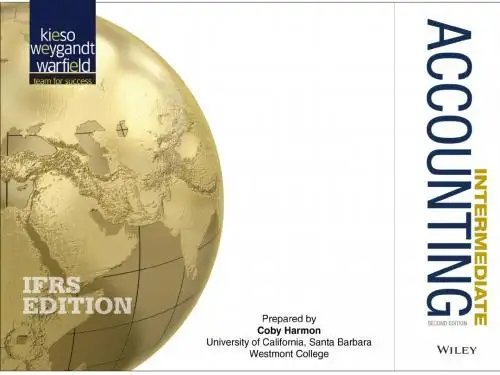
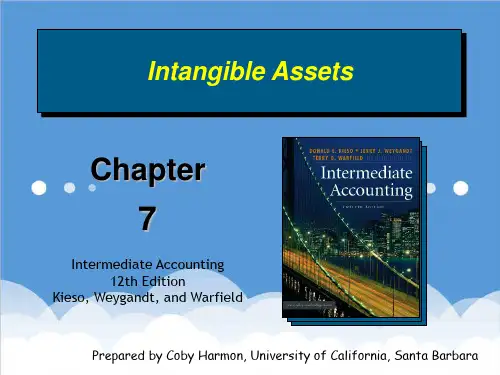
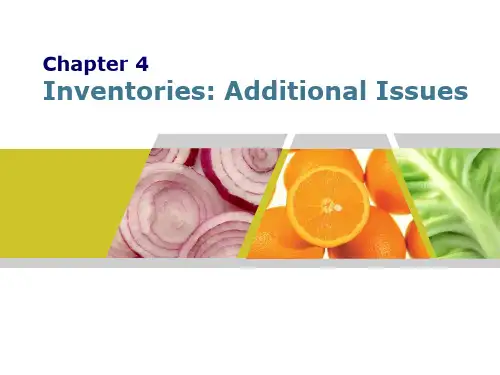

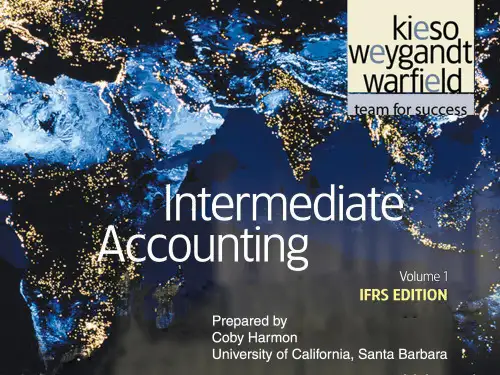

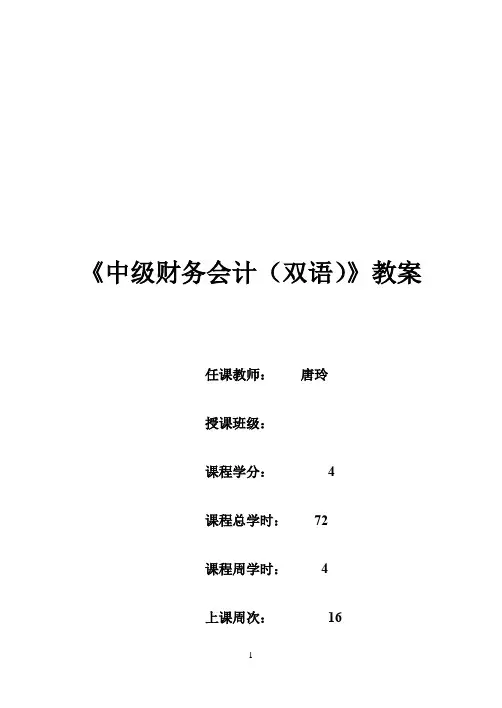
《中级财务会计(双语)》教案任课教师:唐玲授课班级:课程学分: 4课程总学时:72课程周学时: 4上课周次:16教学进度计划教学内容总学时教学手段教学环境第一章总论 4 多媒体课堂教学第二章货币与金融资产 6 多媒体课堂教学第三章应收及预付款项 4 多媒体课堂教学第四章存货 6 多媒体课堂教学第五章长期股权投资 6 多媒体课堂教学第六章固定资产8 多媒体课堂教学第七章无形资产及其他资产 4 多媒体课堂教学第八章流动负债 6 多媒体课堂教学第九章长期负债 4 多媒体课堂教学第十章所有者权益 2 多媒体课堂教学第十一章收入、费用、利润6多媒体课堂教学第十二章财务报告 6 多媒体课堂教学实习10 课堂实践合计72每节课时分配参见课程教学的基本内容。
参考书目:(一)使用教材:唐纳德.E.基索、杰里.J.韦安特著《Intermediate Accounting》中国人民大学出版社李宝珍、裴淑红编《财务会计学》中国市场出版社(二)主要参考书目:《中级会计实务》财政部会计资格评价中心编经济科学出版社《注册会计师全国统一考试辅导教材——会计》中国财政经济出版社《Financial Accounting》,沃尔特·T·小哈里森、查尔斯·T·亨格瑞,美国:清华大学出版社,课程简介中级财务会计(双语)课程是会计学专业、财务管理专业的一门专业必修课和核心课程,是会计专业知识结构中的主体部分。
本课程的任务是介绍财务会计的基本理论和实务,培养学生从事财务会计工作应具备的基本知识、基本技能和操作能力。
本课程共72学时,4.5个学分,其中62个学时为课堂讲授,10个实习课时。
通过本课程的教学,使学生能够掌握会计核算的相关知识和方法,为其进一步学习打下良好的基础。
教学中应注意对学生基本技能的培养,实现应用型人才的培养目标。
课次 1 课时 2 累计课时 2 教学目的与要求通过教学,应使学生了解该课程的内容;一般掌握理解财务会计的目标、基本假设、会计信息质量要求。

中级会计教材英文原版以下为您生成 20 个关于中级会计教材相关的内容示例:---1. **Accrual basis accounting**- 英文释义:An accounting method where revenues and expenses are recorded when they are earned or incurred, regardless of when the cash is received or paid.- 短语:accrual basis of accounting(权责发生制会计)- 单词:accrual(应计;应计项目)- 用法:“The company uses accrual basis accounting to provide a more accurate picture of its financial performance.”(该公司采用权责发生制会计来更准确地反映其财务业绩。
)- 双语例句:Accrual basis accounting is more complex but provides a better reflection of economic reality.(权责发生制会计更复杂,但能更好地反映经济现实。
)2. **Amortization**- 英文释义:The gradual reduction of the value of an intangible asset or a loan over a period of time.- 短语:amortization expense(摊销费用)- 单词:amortize(摊销;分期偿还)- 用法:“The amortization of the patent is calculated over its useful life.”(该专利的摊销是在其使用寿命内计算的。